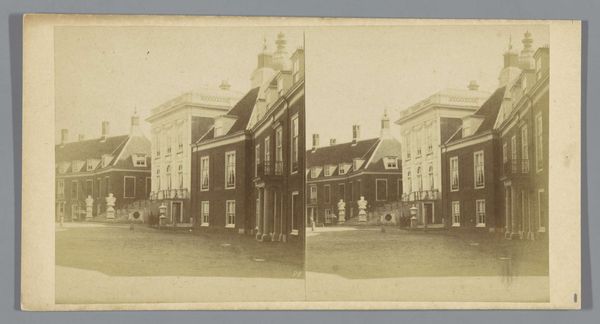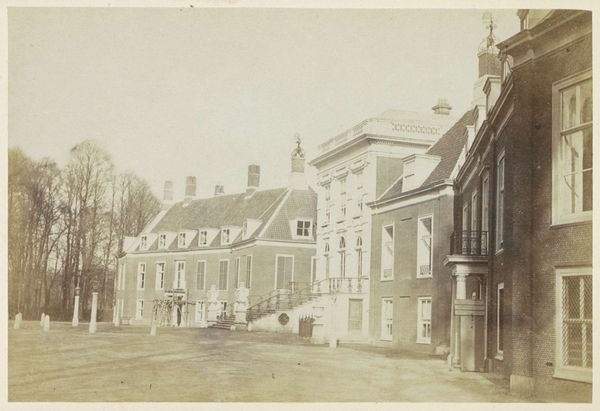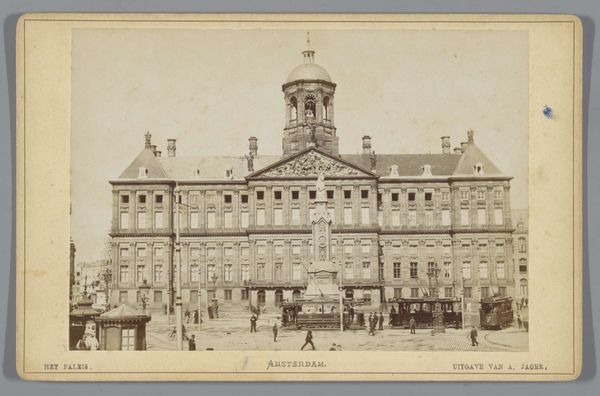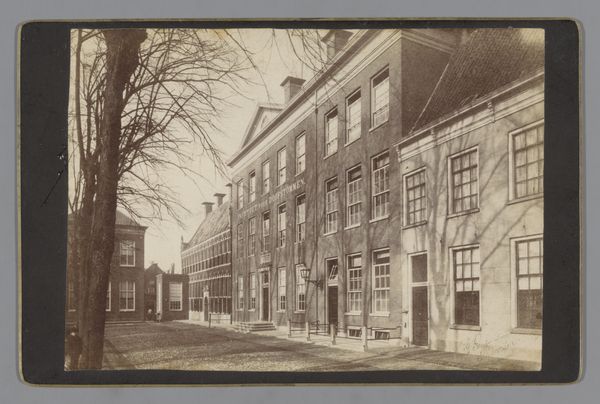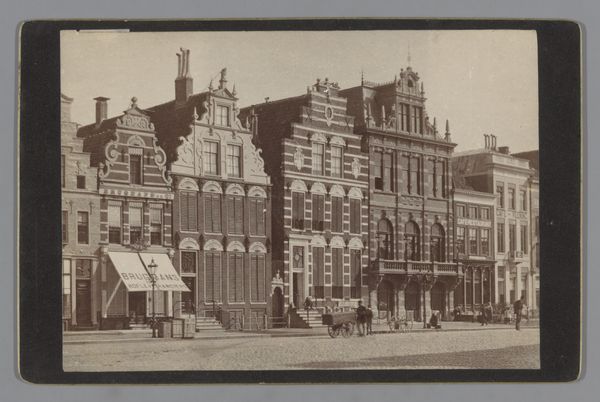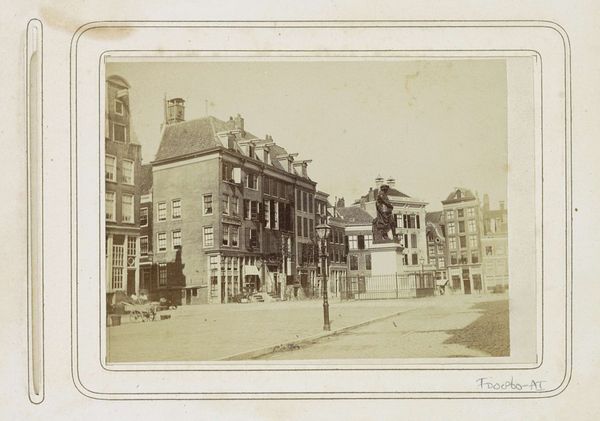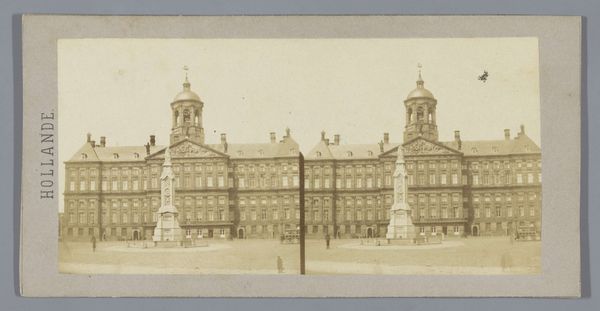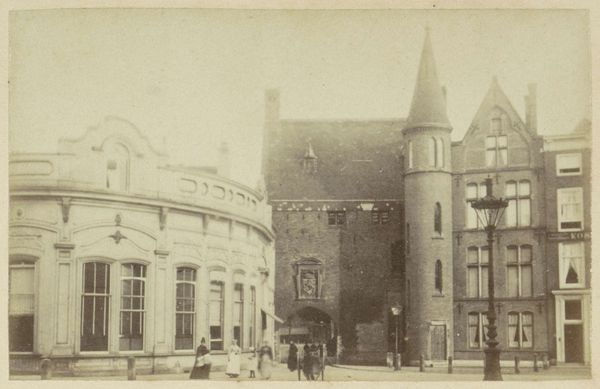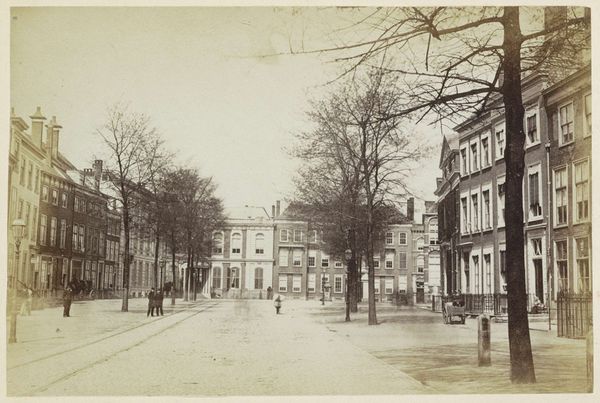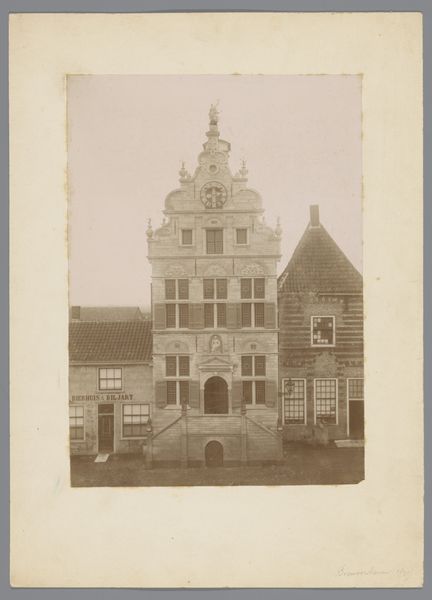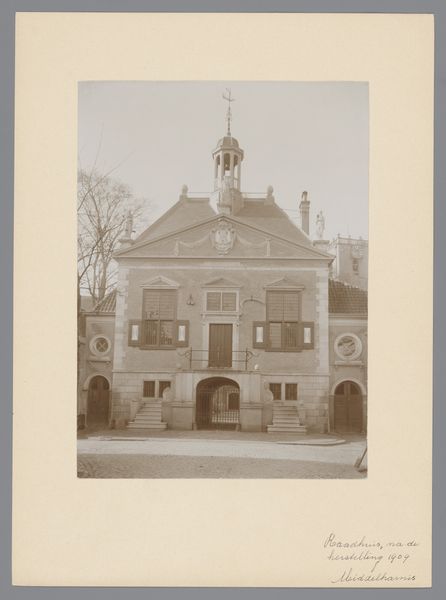
print, photography, albumen-print
# print
#
landscape
#
photography
#
cityscape
#
albumen-print
#
realism
Dimensions: height 50 mm, width 80 mm
Copyright: Rijks Museum: Open Domain
Curator: I am immediately drawn to the almost sepia dreaminess of this vintage photograph. It’s got this washed-out quality that speaks to a time long gone, a feeling of nostalgia just radiating from it. Editor: This is indeed a window to the past. We're looking at a landscape photograph from somewhere between 1860 and 1900, capturing the Groothoofdspoort in Dordrecht. The artist behind it is Andries Jager, who worked with an albumen print to create this scene, now residing at the Rijksmuseum. Curator: Ah, Dordrecht. A Dutch cityscape from another century! The symmetry of the gate flanked by those buildings, it's strangely comforting, like a perfectly balanced memory. I feel myself yearning for simpler times—perhaps deceptively simpler! Editor: The Groothoofdspoort has been an iconic symbol of Dordrecht, once a crucial defense structure and later a pivotal point for trade and cultural exchange. Examining it through today's lens prompts considerations about urban development and architectural choices that affect social equity. Who benefitted from the construction of the buildings? Who had access through the gate, and who was kept out? Curator: Hmm, it’s intriguing to view this photo as a document of socio-economic history. You know, my eye initially glossed over any sense of political narrative because that creamy, almost milky tone of the print feels so inherently benign! But there’s clearly an undertone to all this visual splendor: What kind of lives unfolded behind those neatly ordered windows? Editor: Precisely! Even a seemingly neutral portrayal of architecture is laden with narratives. Consider the "Hotel Bellevue" visible here – who had access to such luxury, and what does that reveal about the social stratifications of the era? And, of course, how the photographic medium itself played a role in shaping perceptions and potentially reinforcing certain social and cultural norms of the period. Curator: I confess, before you pointed that out, the Hotel Bellevue merely suggested “romantic getaway” to my naive mind. It all brings me back to thinking that maybe seeing is *never* truly believing; perhaps seeing is always *interpreting*, and, with every glimpse, revealing our own subjective bent. Editor: Indeed. Approaching the art, engaging with context, questioning visual silences, understanding dominant perspectives - they collectively add critical dimensions to appreciate this deceptively "simple" cityscape. Curator: What a potent reminder that art serves as a powerful conduit. It echoes with complex cultural histories, whispers untold narratives, and inspires conversations that demand our attention, challenging our comfort zones, and pushing us towards something truly expansive. Editor: Absolutely. And by making visible these less-obvious yet essential contexts, we honor the power of art to reflect, critique, and potentially transform the world around us.
Comments
No comments
Be the first to comment and join the conversation on the ultimate creative platform.
